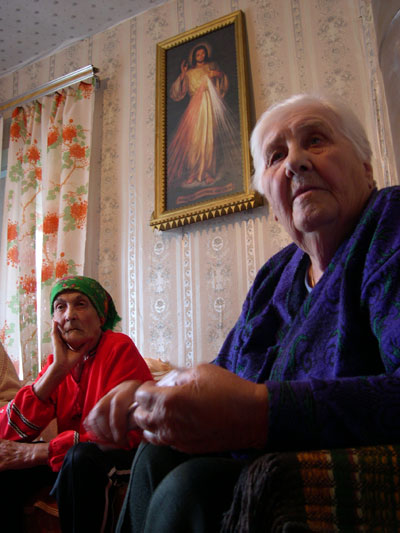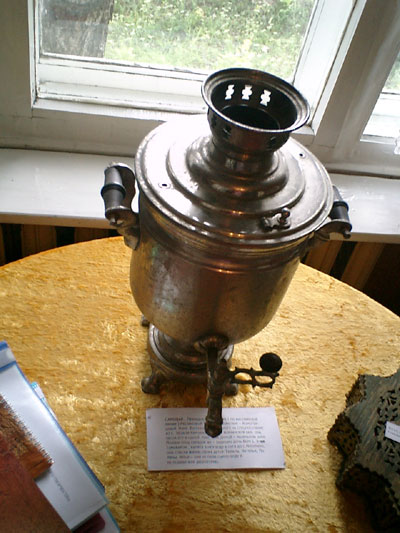









During Stalin’s era transports of political prisoners under escort were incessantly taken to Krasnoyarsk Territory. Hundreds of thousands of Soviet citizens passed through the “Norillag”, “Kraslag” and the “Construction site No. 503”. But only very few people know that the first special-purpose camps under Siberian administration (SibULON) appeared late in the 1920s in Yeniseysk District (Turukhansk District at that time), to be more precise – in the settlement of Krivliak and on the banks of the little Sherchanka river. Two-and-a-half thousand prisoners served their sentence in this place. When the camps were closed down, less than 200 of them were still among the living.
In the regional archives one will not find any documental materials about the existence of these camps. Maybe they happened to get to Novosibirsk or Kemerovo after the formation of Krasnoarsk Territory. In order to explore the places of confinement and deprivation of freedom of the former “enemies of the people”, an expedition, made up by students of the Yeniseysk College of Pedagogics and members of the Krasnoyarsk “Memorial” Organization set off to Krivliak not long ago.
- We have been trying to collect at least a few documents from the local residents, - reported Aleksei Babiy, one of the leaders of the expedition. – The information we were able to get, cannot be found in any archival documents.
The SibULON camps in Krasnoyarsk Territory did not exist for a long time, just for about 2-3 years. All that has been left from those times till nowadays is the regrettable faim of the “death camps”. Lots of mythical stories are centered around them – and some even sound entirely fabulous.
Eye-witnesses confirm that the prisoners had to serve their sentences under most cruel conditions. In the summertime they were punished by exposing them to mosquitos. The prisoners were forced to strip, until they were starl-naked. Then they were tied to a tree. Within a day the midges had eaten up the human creature to the bones. And in winter they were drenched with water out in the open and were kept standing there, until they had frozen to death. The locals report that still nowadays they sometimes fish human bones from Lake Sibulon, which is situated 3 kms away from the village.
People say that, upon the shut-down of the camp site, in one of the camp sub-sections had survived only 100 out of 1500 prisoners, in another sector merely 60 out of 1000 were still alive.
The only thing reminding us of the existence of camps around the settlement of Krivliak today is a lonely, half-decayed barracks and a lake called Sibulon, which is probably the one and only lake all over the world named after a concentration camp.
In 1931 they brought expropriated kulaks (large farmers) to Siberia. The authorities found it more economic to fell trees by using the manpower of prisoners. Thus, they would not even have to spend money on their surveillance and on barbed-wire fences. They just needed to drive some “kulaks” there, set up a certain work norm and then let them see, how to cope with the situation and how to provide themselves with food right in the middle of the taiga.
Nowadays former resettlers make up the biggest part of the residents of Krivliak, but nevertheless one can say that the village is on the point of dying out. Many of its inhabitants live on unemployment benefit or receive a pension. The taiga helps them to survive; the people who live there have changed over to free foodstuffs . they pick berries and nuts, go mushrooming and catch fish.
There seemed to be a never-ending stream of resettlers arriving in Yeniseysk District. In 1930 they transported to the spot people from the Altai and Baikal regions, in 1931 from the Ukraine, in 1940 from the West-Ukraine and in 1941 Germans, Letts. Estonians and Lithuanians. During the post-war years they once again brought West-Ukrainians, Germans and Balts.
The special settlers lived in dug-outs and had to work for the timber industry. They were forced to regularly register with the commandant’s office. The local residents treated them in very different ways – theauthorities, in any case, did not appreciate any contacts with “enemies of the people”. They did not receive anything to eat. The resettlers died right at work. “It would happen that someone sat down on the stamp of a tree in order to have a short rest – and all of a sudden he was dead”, the villagers recall.
It is almost impossible to listen to what former victims of reprisals report, withoutbreaking into tears. One story is more frightening than the other. Yevgenia Petrovna, who was born in the Ukraine. curses them all – both the former Soviets and today’s government. The Soviets, because she lost her home under their rule, and today’s government, because she is now leading the miserable life of a beggar, without disposing of any financial means to return to her former home grounds.
Today, many Germans live in the settlement. Some of them are from among those who came to the Altai Region early in the last century, in the course of Stolypin’s reform, and were later deported to Siberia.
Although, in 1941, a decree was passed on the resettlement of theGermans from the Volga only, Germans were, in fact, chased away from every corner of the USSR. There is Emma Yakovlevna Gorodetskaia, for example, who was bornin the vicinity of Saratov. She reported that her family had to go through three waves of reprisals. Early in the 1930s they were dispossessed, for they owned a prospering, large farmstead; in 1937 they got caught in the machinery of the “Great Terror”. When the war broke out those family members, who were still alive, were deported to Siberia. The worst they had to go through, however, was the year of famine 1933.
- My brother and I were unable to walk anymore; our legs were paralized with hunger. The sister, who had to go to work was forced to leave the two-year-old boy at home all alone. One day, when coming back home, she noticed that the starving child had started to gnaw the meat off its own hands and feet. The child was dead; it died from loss of blood. The next day the woman went mad.
***
Strange to say that the victims of reprisals, after having gone through so many unhuman and cruel conditions, neither feel hatred for the responsible persons, nor arethey angry with them. They say: “It’s all over and that’s that!” – When they later had the possibility to go back to their home towns and villages they yet decided to stay in Siberia, because they had meanwhile got accustomed to their place of resettlement considering it as their second home.
Olga LOBZINA, Arguments and facts 09/08/06
Photos by: arah Schönfeld, Irina Moiseeva

Two victims of reprisals – E.Y. Gorodetskaia and Y.P. Adolf
Two photo artists from Germany, Sarah Schönfeld and Felix Meier, took part in the expedition, as well. They made this trip to Krasnoyarsk Region to realize their project “My Home – the GULAG”. Afterwards they travelled on to the Kolyma. An exhibition with photos of the two German artists will open in Krasnoyarsk in winter.

This samovar is among the exhibits of the museum in the Yartsevsk Center of Children’s Art. Early in the 1930s hundreds of dispossessed large farmers from the Baikal region were transported away to Siberia. First of all in heated freight cars and then on barges, where they had to live under horribly unsanitary conditions. Many died on the way from diarrhoe. The Komogortsev family managed to take their samovar with them enabling them to boil the water before drinking it. Thus, the samovar became the life-saver for the adults and their four children, for they did not have to drink contaminated water unboiled.